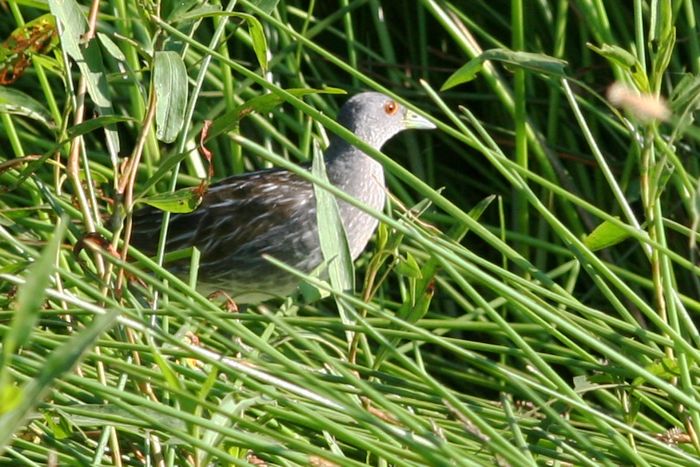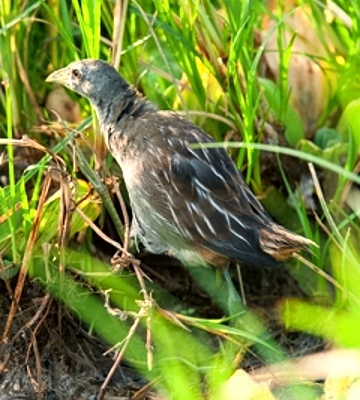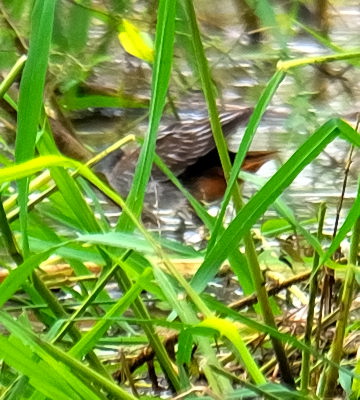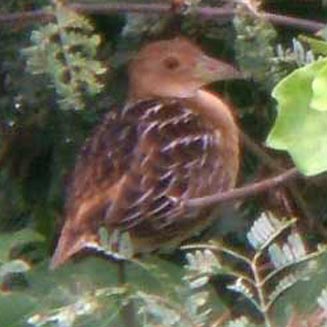
Aenigmatolimnas marginalis
SUBFAMILY
Rallinae
TAXONOMY
Porzana marginalis Hartlaub, 1857, Gabon. Monotypic.
OTHER COMMON NAMES
French: Marouette rayйe; German: Graukehl-Sumpfhuhn;
Spanish: Polluela Culirroja.
PHYSICAL CHARACTERISTICS
7–8.3 in (18–21 cm); 1.5–2.2 oz (41.5–61 g). Male dark brown
with white streaks on upperparts; anterior underparts pale
cinnamon; rear underparts orangy- to reddish brown. Female
has gray foreparts; juvenile duller and plainer.
DISTRIBUTION
Ivory Coast east to Cameroon and south to Congo; eastern
Democratic Republic of Congo (Zaire) to Kenya and south to
northeast South Africa. In south, largely a wet season visitor,
retreating towards equatorial regions after breeding.
HABITAT
Seasonally inundated grassland, pans, and marsh edges.
BEHAVIOR
Diurnal and secretive. Territorial when breeding; female gives
ticking advertising call, often at night.
FEEDING ECOLOGY AND DIET
Invertebrates, small fish, and frog tadpoles. Forages in grass,
mud, and shallow water.
REPRODUCTIVE BIOLOGY
In captivity is sequentially polyandrous, female mating with
two or more males. Breeds mainly during rains. Nest a bowl of
grass or sedges in vegetation over water. Eggs: four to five. Incubation:
17–18 days, by male only; young cared for by male;
fledge at 28 days; one to three broods per season.
CONSERVATION STATUS
Possibly uncommon throughout range; sometimes locally common
after good rains.
SIGNIFICANCE TO HUMANS
None known.
Other popular Animals
Photo Gallery of - Striped crake




 Animalia Life
Animalia Life